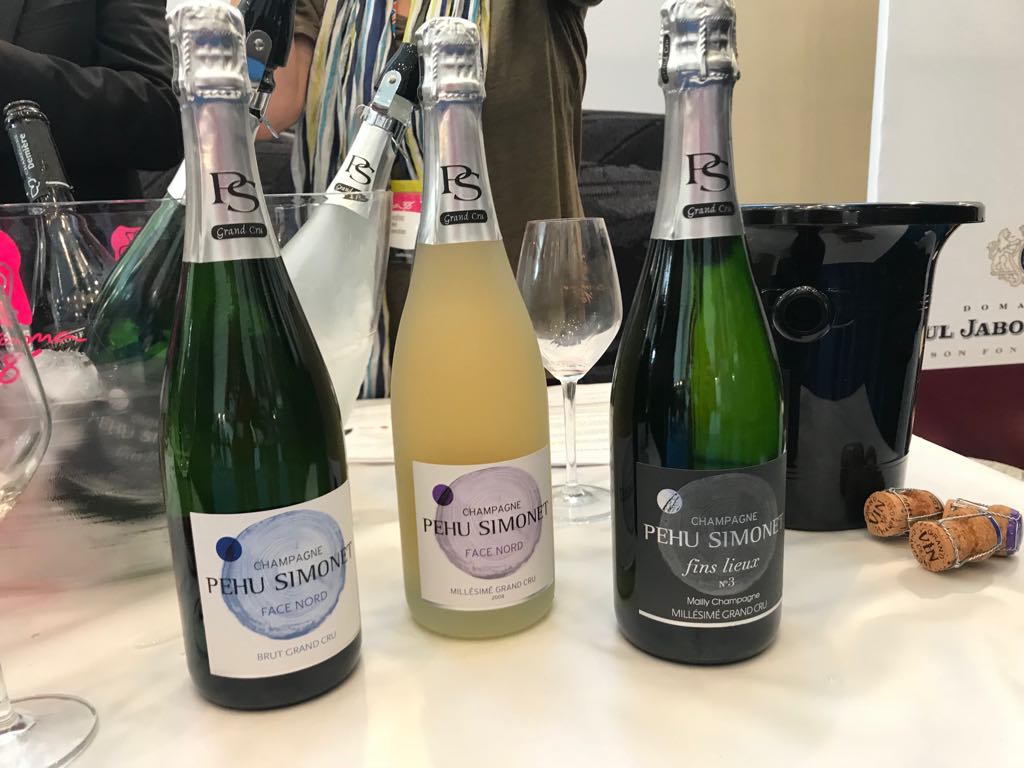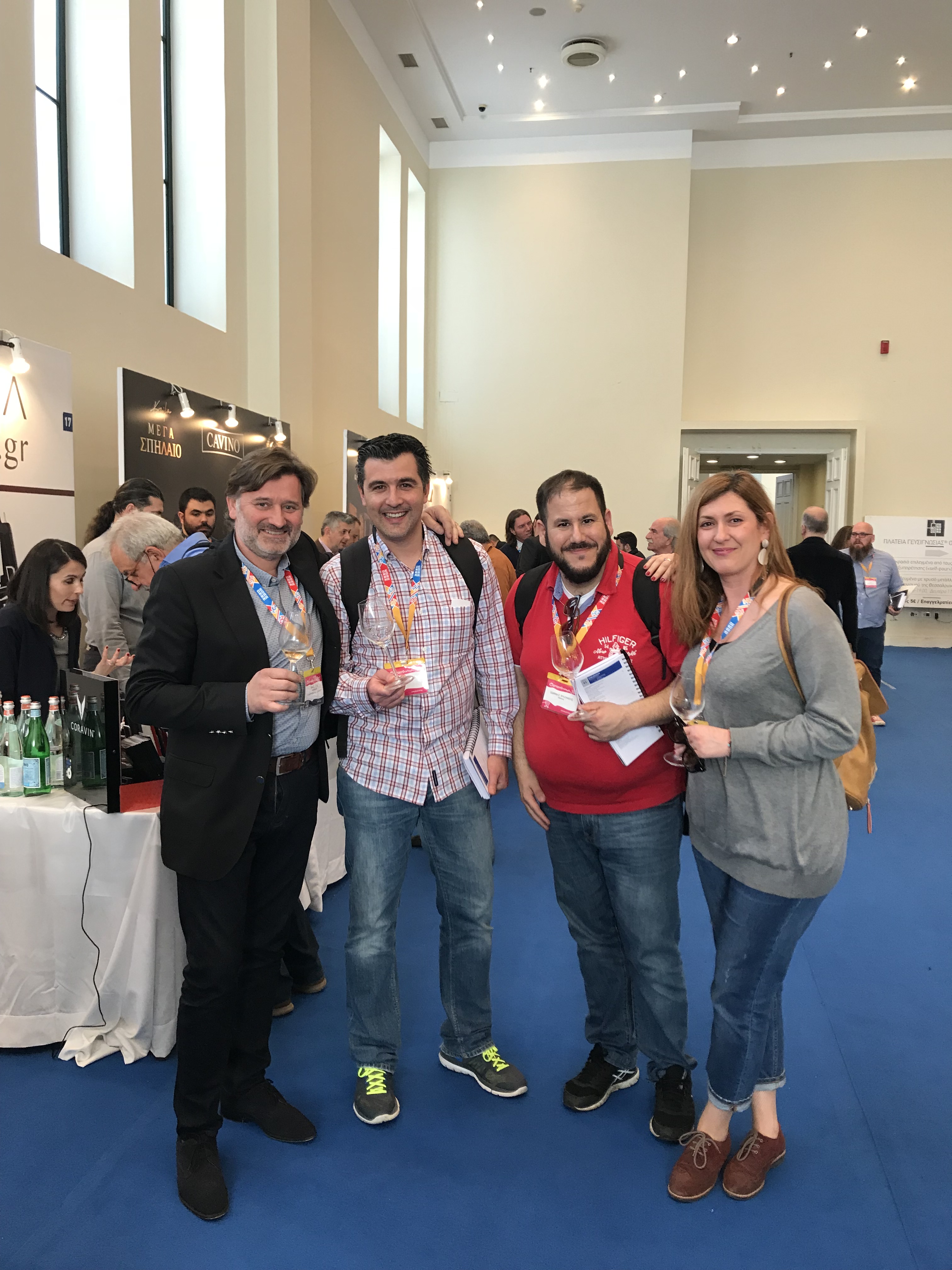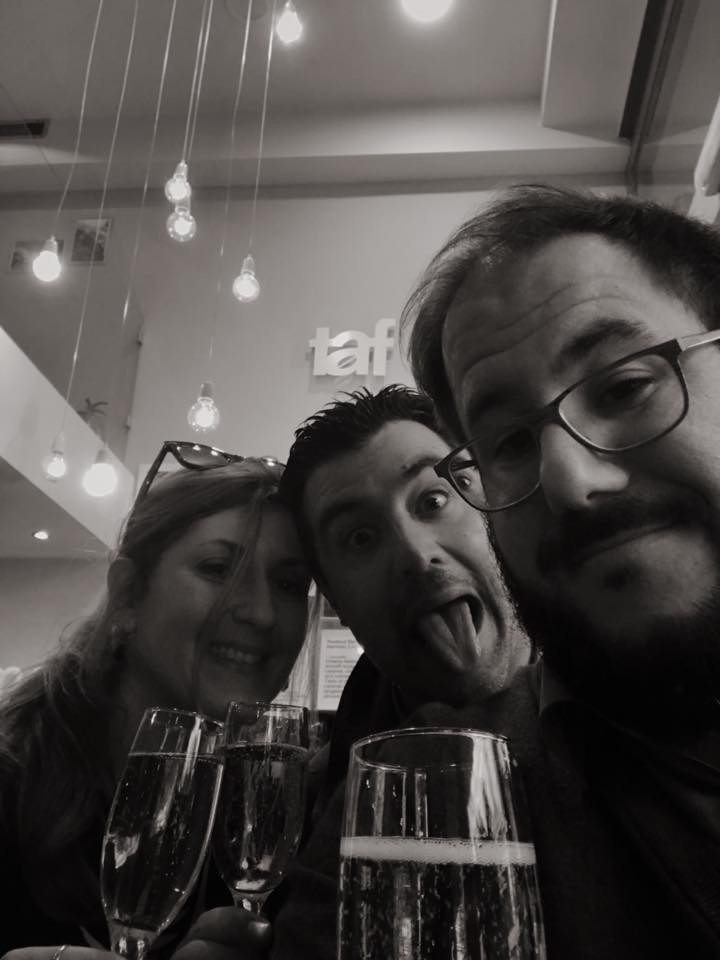Oenorama: the world’s leading Greek wine exhibition, held annually in Athens. It all started back in 1994 and it was every other year hosted. At some stage in 2001 the Dionyssia were introduced, again bi-annually: so you had odd years Oenorama, even years Oenorama (or vice versa, can’t be sure). 2014 onwards the 2 exhibitions were amalgamated into a single, annual one with a unique venue: The Zappeion Mansion off Syntagma square in the center of Athens! I think I attended my first Oenorama back in 2006, having been invited by a -then- new friend who was in the business. One is for sure: a lot has changed eversince, the exhibtion has grown bigger in terms of exhibitors & market significance. And over the past couple of years you could get to see a non-Greek winemaker at the stand of their local importer, but nothing more than that. Yes, there was this foreign element as the big importers and wine merchants would parade their goodies for the visitors to get a glimpse of.
But this year – yes this year – this non-Greek element was bigger than ever: 4 producers from the highly regarded Champagne region of France grouped as Champagne Wineries, had their own stand! So did the so called Oenotrip exporters, from Saint-Hippolyte in northeastern France with producers serving their wines. And, ofcourse, the German superstar of wine, Ernst Loosen who had a guest pass from his importers’ stand (the Nostos Wines of Sakis Papadopoulos. Not bad for a Greek wine exhibition!
Now the cautious reader will be prompted to ask at this point: you said this is a Greek wine exhibition but so far you have been talking to us about the non-Greek ones. We are losing you! You shouldn’t actually and I ‘ll come to that. Let me touch upon the wines a bit, I mean the French and German wines we tasted and the overall impression we got from the producers.
First things first – the Champagne Wineries. Four producers, all with their best smile on their face, other fluent in English, other a lot less – but that didn’t have the slightest impact. They were all open and willing and inviting and… I can go on forever as, for some strange reason, I thought they ‘d be snooty (it’s Champagne after all!) and they weren’t at all. Champagne Demiere – the winemaker Jack Demiere himself treated us to some of his labels (as his full gamut numbers almost 2 dozen), starting with the dry “Grande Reserve”: great nose with exotic fruits prevailing; mineral hints on the background. Good body and texture. A very balanced and pleasant wine ideal for food pairing. His (also dry) “Solera 23″ drove us crazy: a single varietal wine from Pinot Meunier with delicate foaming, Fruity nose in the beginning with toasted bread and brioche tickling the nose. The bubbles feel like crystalline pearls on the palate, exploding with acidulous flavours that stand out against a rich, smooth background of ripe fruits. Last but not least his dry Rosé de Saignée” from Pinot Noir 100%: the fruit explodes in the glass – raspberries and cherries make you dizzy. The mouth is fresh and generous: crispy red fruits, you almost feel like biting a crunchy cherry. Excellent as an aperitif but I wouldn’t personally hesitate pairing it with red fruit tarts.

Off we go to Monsieur Eric Taillet: “Sur le Grand Marais”, a dry blend from Pinot Meunier and 10% Chardonnay – refreshing, with citrus aromas prevailing on the nose, good texture and body. The “Exclusiv’T NV” is an elegant, fruity wine from 100% blanc de Meunier that can pleasantly accompany most occasions. Last but not least the rose “Luminosi’T” a blend of 92% Meunier and 8% Pinot Noir grapes. Saumon color. Delicate aromas with strawberries on the foreground and raspberries on the background. Very refreshing and crispy aftertaste. What would you say if we were to tell you that a ballerina treated us to 2 delicate champagnes? I guess you would either take us for fools or think of this as a marketing tweak for a winery to attract more attention.

Well, sorry if I have to burst your bubble but the wine maker behind Champagne Aurore Casanova is an ex-ballerina! Who quit ballet for taking over her mum’s winery. Well done Aurore: the delicacy of your ballet dancing has been imprinted in your champagnes – one more robust, the “NV Champagne”, a blend of Chardonnay, Pinot Noir and Pinot Meunier. And a more fruity, playful edition, the “Casanova Rose” again primarily from Chardonnay, Pinot Noir and Pinot Meunier and 16% from Pinot Noir, but with red vinification followed by ageing in oak barrels (the latter giving the wine it’s color)!. Both with fine texture and character.

The sweet Aurore Casanova (in the middle, to her left Eric Taillet, to her right the Champagne Demiere couple) smiling at us!
Last but not least: Pehu Simonet with his handful of labels. “Face Nord Brut NV” with 70% Pinot Noir and balance 30% from Chardonnay grapes – crispy & elegant. The more complex “Face Nord Brut Millesime 2008 Champagne AOC Grand Cru”: extra dry, fine bubbles, hints of fruit but with yeasts prevailing. Long aftertaste. If sea food is in your dish, then this is your wine!

Monsieur Pehu Simonet treating us to his wines!


The YAMANI team taking a shoot with the winemaker!
Gosh, I am taken with Champagne! And to the extent that I almost forgot that Herr Ernst Loosen himself was invited and attended the exhibition on both Sunday and Monday – the restless Sakis Papadopoulos of Nostos Wines (importer of Dr. Loosen’s wines to Greece) took us by surprise. What a character! (as a matter of fact Sakis is also a character but, for the purpose of this piece I will shed light on the winemaker himself – Sakis I hope you understand!). He is so passionate about his wines and the soil – he had a binder with him full of his vineyards photos. He will tell you all the details about the soil and why grapes from one terroir give a different product to the others, and so on and so forth. We tasted every single label, brought over for the Exhibition,of his 2 different brands: Dr. Loosen (for the Mosel grown grapes) and Villa Wolf (for the Pfalz ones). I am tempted to list them all, as I have a good word (or two) for all of them but guess what – that will take the magic off: you still have to do this yourselves. I will thus concentrate on the absolute musts. “Dr. Loosen Red Slate 2015” being the first – as you can tell from the label, the soil is red slate which results in high minerality, explicit acidity and notes of tropical fruits on the nose. Lovely, long aftertaste. Make sure you have half a dozen at home! The other half to be left for “Dr. Loosen Urziger Wurzgarten Grosses Gewächs Alte Reben 2015”. The German speaking readers must have inferred we are talking about 110 old vines (pre-phylloxera!!!) with unique, spicy minerality, (no wonder it was labeled as “Urziger Wurzgarten” which stands for Urziger’s Garten of Spices), oily texture and long aftertaste. Forgot to add that both the above are 100% Rieslings. The semi-dries are also to die for: the “Dr. Loosen Wehlener Sonnenuhe Kabinett”, 2015 vintage makes a unique pairing for Asian cuisine with the residual sugars making a more rounded and full mouth. And the sweet (from noble rotting!) “Dr. Loosen Riesling Beerenauslese 2013” is an ideal dessert wine, with the acidity counterbalancing the sweetness, to a complex, long finish. Ernst Loosen is a super star, for the wine standards. He ‘s got that sparkle in the eye and this same sparkle can be tasted in his wines.


Herr Ernst can talk forever for the Mosel terroir!
A big thanks to all Champagne makers and to Sakis & Ernst – it was a big honor to have you with us.

The YAMANI team along with Ernst Loosen and his Greek importer Sakis Papadopoulos (2nd to the left) of “Nostos Wines”!
Hung on a minute here: you said there was a reason for us reading on French and German wine makers on a Greek wine exhibition. Still not sure what that is? Well, it’s the status of the Greek wine my friends, can’t you see? Greek wine has become international, is opening up to more markets and is now attracting makers from traditional countries, such as France and Germany. How great is this? At the end of the day one realises that there is a common language we, wine lovers, can communicate with globally: the wine itself!
And realising what a global thing wine is we thought right to come up with our first post in English, thus opening up to the non-Greek speaking readers (or at least wishing we will have those sort of readers!).
And Greek wines? Well, you can read in great detail about our white and red proposals but in Greek. We will just focus here on few of them – from the globally recognised Santorini ones, such as Gavalas Winery, Hatzidakis Winery and Sigalas – don’t miss their white Assyrtikos (both fresh and oak barrel aged ones) and definitely their small produce Mavrotraganos, from rare red mavrotragano (black crispy in Greek) grape. Or the noble whites from Savvatiano grape, from the wider Athens vineyards: look for Papagiannakos, Mylonas and Frangou ones. The Papargyriou wines, from Corinth (near Nemea) are unique – don’t miss the “Papargyriou Blanc” if it’s only one you are tasting. It’s not only Santorini that makes good wines, there are other islands too: such as Tinos and the upcoming Vaptistis Winery (with the local white Monemvasia and Assyrtiko grapes featuring) and Leipsoi Island with Leipsoi Winery. We could use 5 volumes to talk about Cretan Wines – the likes of Lyrarakis, Douloufakis and Rhous Wineries make excellent wines (try their Cabernet Sauvignons to see how this international red diva has adopted in the local soils) but we now came to see how great wines Paterianakis makes too – go for their Vidiano, a locally cultivated variety. And one cannot forget the red Xinomavros, from the Northern West part of Greece. Naoussa is one of the key areas for dummies to start their know how with xinomavro grape – on the side of the big players Kyr-Yianni Estate and Boutari Winery, try the Dalamara, Chrisochoou, Fountis and the Melitzanis Estates. All unique, with their own character – the latter emphasizing on stainless steel tank fermentation for instance; no barrel aging whatsoever.
Well I guess this is now becoming too long. I will stop here – Greek wines are vast but that’s not the scope of such a presentation. There is great dynamic relating to Greek wine and we will be here to record it. We only hope to have you by our side, reading us!
Cheers or… stin ygia mas, as we say in Greek!

Related Posts